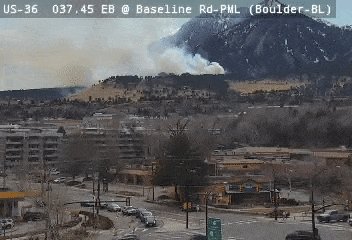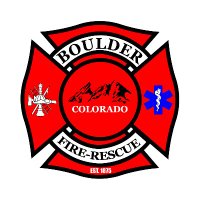Navigating The Flames: How Twitter (X) Becomes Boulder's Lifeline During Fire Emergencies
Boulder, Colorado, is renowned for its stunning natural beauty, nestled at the foothills of the Rocky Mountains. Yet, this picturesque setting comes with an inherent risk: the ever-present threat of wildfires. In an era where information travels at the speed of light, real-time updates are not just convenient but critical for public safety. For the residents of Boulder County, social media platforms, particularly Twitter (now known as X), have evolved into an indispensable lifeline, serving as the primary broadcast channel for officials and the go-to source for residents seeking urgent information during emergencies.
When living in an area with ever-present fire risks, the ability to access immediate, accurate information can mean the difference between safety and disaster. This article delves into how Twitter has become a pivotal tool in Boulder's fire management and communication strategy, highlighting its role in various incidents, from devastating wildfires to localized emergencies.
The Digital Watchtower: Twitter's Role in Real-Time Updates
In the face of rapidly developing fire situations, official channels on Twitter (X) provide crucial, up-to-the-minute information, helping to guide residents and coordinate response efforts. This digital watchtower ensures that the community is informed, prepared, and able to react swiftly.
- Cara Delevingne Brown Hair
- Easy Maintenance Hair Colour
- Little Presents For Friends
- Tarte Black Friday Sale 2024
- Pubic Area Exfoliant
Immediate Alerts and Official Channels
In Boulder County, many officials have embraced Twitter as their primary broadcast channel. Accounts like @boulder_fire (Boulder Fire-Rescue Department) and the Boulder Police Department regularly post updates, warnings, and instructions. Residents have come to rely on these tweets as the best real-time information source in emergencies.
- For instance, when a wildfire appears to have been sparked in Boulder just south of Green Mountain on the east side of the Flatirons late Friday morning, the Boulder Police first posted at 11:46 a.m. Friday on social media, providing the initial alert.
- During the #DinosaurFire, officials described it as a "slow-moving" fire, and the Boulder Police Department tweeted, "The #DinosaurFire is not behaving in a way that is a cause for evacuation concerns at," helping to manage public anxiety and provide clear guidance.
- Later, Boulder Fire Rescue tweeted just before 5 p.m. Wednesday that the "active fire has been put out. Firefighters are working to ensure the perimeter around the fire is safe and will be putting" out hot spots, demonstrating how Twitter is used for status updates and reassuring the public.
The latest posts from @boulder_fire are often the first place concerned residents look for updates, showcasing the platform's role as a direct conduit between emergency services and the public.
Visuals and Community Sharing
Beyond official text updates, Twitter's capacity for sharing multimedia content amplifies its impact. One account on X, formerly Twitter, shared videos and photos of the scene, showing smoke rising as a fire burns. This immediate visual evidence helps residents understand the severity and location of an incident, even from a distance. While official accounts prioritize verified information, community members often share their own observations, which, when corroborated, can contribute to a comprehensive picture of the situation on the ground. This blend of official communication and citizen reporting, while needing careful verification, underscores the platform's dynamic nature during crises.
- Leo Sun Tattoo
- Jamaican Black Castor Oil Hair Growth Before And After
- Best Hairstyles For Rectangular Face
- Nails Mix And Match
- Bardot Fringe
Understanding Boulder's Fire Landscape
Boulder's history is marked by various fire incidents, ranging from massive wildfires that reshape the landscape to more contained emergencies. Twitter's role spans across these diverse scenarios, providing critical information for each.
The Shadow of Wildfires: Past and Present
Boulder County has faced, and continues to face, significant wildfire threats. These events underscore the constant need for robust communication systems.
- The Marshall Fire (2021): A devastating example of Boulder's vulnerability, the Marshall Fire was a destructive wildfire and urban conflagration that started on December 30, 2021, shortly after 11:00 a.m. MST, as a grass fire in Boulder County, Colorado. This catastrophic event caused the evacuation of 37,500 people, killed individuals, and resulted in hundreds of structures being destroyed, with thousands more evacuated after the 1,600-acre fire spread across several communities.
- NCAR Lab Fires: The area near the National Center for Atmospheric Research (NCAR) Laboratory is a frequent hot spot. A wildfire near the NCAR Laboratory in Boulder County was recently 100% contained, a testament to effective firefighting efforts. However, the threat remains, as evidenced by a new fire start south of the NCAR fire burn area near the north fork of the Shanahan trailhead, prompting immediate trail closures. The fire is burning on property owned by the National Center for Atmospheric Research.
- Preparedness and Mitigation: In response to these threats, proactive measures are continuously undertaken. The goal is often to create a wet zone about 30 feet from homes as a barrier, a crucial strategy to protect residential areas. So far, in many incidents, no structures have been damaged, and the fire is continuing to move south, indicating the success of such efforts and the ongoing vigilance of fire crews.
Emergency Services and Response Efforts
The Boulder Fire-Rescue Department (BFRD) plays a central role in mitigating these risks. BFRD strives to make Boulder a safe place to live, work, and play, actively working to reduce human suffering caused by fires, accidents, sudden illnesses, and hazardous incidents. Firefighters have completed their initial work on putting out fires and searching properties, ensuring that no additional structures are threatened or damaged, and no injuries have been reported in many of these wildfire incidents.
Beyond Wildfires: Other Fire-Related Incidents and Information Needs
While wildfires dominate the conversation around "Boulder Fire," Twitter's utility extends to other fire-related incidents that require public awareness and official updates. For example, in a distinct incident, the number of people hurt in a "fire attack" in downtown Boulder grew to eight, a Boulder police spokesperson said. The injured — four men and four women — were of various ages. In a video of the scene captured by Osante, people could be seen pouring water on a woman lying on the ground, who Osante said had caught on fire during the attack, alongside a man. This type of incident, while not a wildfire, still necessitates rapid communication to inform the public and coordinate emergency response, showcasing Twitter's broader applicability in crisis communication.
The Challenges and Imperatives of Digital Communication
The reliance on Twitter as a primary information source during emergencies is not without its challenges. As the flames raced through northwest Boulder on Labor Day morning, concerned residents naturally jumped on their computers in search of news on the fire. But the sheer volume of information, and the need to discern official updates from speculation, can be overwhelming. This highlights the critical importance of official accounts maintaining consistent, clear, and timely communication. Updated information, such as "A wildfire is burning above Boulder, Colorado, and Twitter and Facebook are playing an important role getting out the latest information on the fire’s path," underscores the evolving landscape of emergency communication.
In an environment where fire is an ever-present concern, the rapid dissemination of information via platforms like Twitter (X) is paramount. It allows emergency services to manage public expectations, issue evacuation orders, provide safety instructions, and offer reassurance. For residents, it's a direct link to the latest developments, empowering them to make informed decisions for their safety and that of their loved ones.
In conclusion, Twitter (now X) has cemented its position as an indispensable tool in Boulder's fire safety and emergency response framework. From providing real-time updates on active wildfires like those near the NCAR Lab and the Marshall Fire's devastating spread, to informing the public about contained incidents and even unusual "fire attacks" in downtown areas, the platform ensures that crucial information reaches the community swiftly. The proactive efforts of the Boulder Fire-Rescue Department, coupled with the immediate broadcast capabilities of social media, create a robust system for managing crises. In a world where fire threats are increasingly complex, digital communication channels are not just convenient additions but fundamental components of preparedness, safety, and community resilience.
Article Recommendations



Detail Author:
- Name : Georgiana Beahan
- Username : irohan
- Email : albertha51@rice.com
- Birthdate : 1992-07-21
- Address : 304 Douglas Squares Apt. 957 Wittingside, UT 21727
- Phone : 857.236.1365
- Company : Rempel LLC
- Job : Soil Conservationist
- Bio : Accusantium sed eos facilis non explicabo commodi esse. Aliquid nihil et provident enim eligendi omnis ex. Sapiente odit aperiam minus ex doloribus. Ipsam quia qui in tenetur aut iusto.
Socials
linkedin:
- url : https://linkedin.com/in/norval_corkery
- username : norval_corkery
- bio : Qui sit consectetur sint enim sunt dolorem et.
- followers : 1306
- following : 1786
tiktok:
- url : https://tiktok.com/@norval_official
- username : norval_official
- bio : Qui quia occaecati optio non nisi.
- followers : 6671
- following : 1283
facebook:
- url : https://facebook.com/corkeryn
- username : corkeryn
- bio : Possimus et molestiae est. Cum enim iusto ipsa.
- followers : 4228
- following : 2660